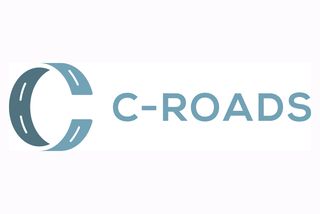C-Roads Norway

Description
The Norwegian pilot was part of the NordicWay 2 project (2017-2020) and currently part of the NordicWay 3 project’s (2019-2023) pilots running in the Nordic countries Denmark, Finland, Norway and Sweden. The main objectives of the NordicWay Actions are to deploy pilot studies in order to further develop interoperable Day-1 and Day-1.5 C-ITS services and support infrastructure readiness for connected and automated driving in Denmark, Finland, Norway and Sweden.
NordicWay 2 project (2017-2020):
- Contribute to the harmonisation and interoperability of the C-ITS services in Europe in line with requirements agreed by the C-Roads Platform.
- Support the deployment of new "Day-1” and “Day-1,5” C-ITS services in Nordic countries and extend its use in vital road freight transport routes subject to extreme weather conditions and in urban and interurban environments
- Support the infrastructure readiness for connected and automated driving in Nordic countries in snowy and icy arctic conditions.
- Evaluation results (2020) include technical feasibility, ecosystem and business models, socio-economic impacts of the piloted Day-1 and Day-1.5 C-ITS services as well as the effect on user´s mobility and traffic behaviours and on public acceptance. Final evaluation results are available in www.nordicway.net.
NordicWay 3 project (2019-2023) will continue to harmonise and build European C-ITS interoperability in the C-Roads Platform (www.nordicway.net).
Norwegian national pilots
The two Norwegian pilots include (1) use cases of Day 1 and Day 1.5 C-ITS services on the peripheral networks and (2) mapping of infrastructure readiness for connected and automated driving on major freight routes of the comprehensive network in Norway.
Use cases of Day 1 and Day 1.5 C-ITS services on the peripheral networks
The pilot will design, and implement, test and evaluate use cases of Day-1 and Day-1.5 C-ITS services on the peripheral networks, to allow for smooth transitions between the networks. Testing on the comprehensive and peripheral networks ensures a broader test of functionality than on the core network. If tests are successful on the peripheral or comprehensive network, the Day-1 and Day-1,5 C-ITS services tested will be applicable under extreme weather conditions on the core network. In particular, the pilot will explore the feasibility of the following Day-1 and Day-1,5 services on these rural routes with poor cellular connectivity and without full access to power mains:
Day 1 services:
- Hazardous location notifications:
o Slow or stationary vehicle(s) & Traffic ahead warning
o Weather and road conditions
o Emergency brake light
- Road works warning
o Road and lane closure
o Mobile road works
- Signage applications:
o In-vehicle speed limits
o Signal violation/ intersection safety
o Green light optimal speed advisory
o Single vehicle data
Day 1.5 services:
- Information on fuelling & charging stations for alternative fuel vehicles
- On street parking information and management
- Traffic information & Smart routing
- Cooperative collision risk warning
The interoperability of the following C-ITS services will be tested throughout the whole NordicWay2 network:
- Slow or stationary vehicle(s) & Traffic ahead warning
- Weather conditions
- Traffic information & Smart routing
Final report Norwegian Pilot 1
The service “Weather conditions” will include slippery road detection since this is an important functionality to ensure traffic safety and traffic ability on rural roads in wintertime. Moreover, the “Green light optimal speed advisory” test will be oriented to test the use of the virtual “traffic lights”.
The communication technology tested under this pilot will be cellular communication. Selected roadside infrastructure and vehicles may also be equipped with ETSI ITS-G5 when needed to ensure interoperability.
Mapping infrastructure readiness for connected and automated driving on major freight routes of the comprehensive network in Norway
The pilot will map and assess the infrastructure readiness for connected and automated driving on major freight routes of the comprehensive network in Norway.
It aims at identifying what parts of the network are hard to read for the vehicle sensors and exploring the potential for communicating information from the road authorities’ backend instead of rebuilding the infrastructure using C-ITS.
The pilot was extended and covered main roads in all four Nordic countries, see map.The inclusion of the other countries that are partners in the NordicWay project gave the NPRA a unique chance to create a dataset for direct comparison between the Nordic countries. Recording of data into three groups.
- Mobile network coverage and quality
- GNSS availability and quality
- The vehicles understanding of the infrastructure
Final report Norwegian Pilot 2
The Norwegian NordicWay 3 C-ITS pilots in main road network and urban environment, using cellular network and C-Roads hybrid communication Interchange Node architecture, will be implemented between 2021-2023.
Location Description
The C-ITS pilot will be on the corridor from Tromsø to the Finnish border. The main pilot stretch will be from Skibotn to Kilpisjärvi, but other road sections on E8 and connecting roads can be included in pilot activities if it is appropriate to cover specific issues. In addition some services will bet tested in the junction Patterø, at E6 south of Oslo.
The mapping of the infrastructure for connected and automated driving readiness will start at the E8/Finish border and continue south on the E6 to Trondheim and from there down to Oslo and onwards to the Swedish border. This mapping was expanded to the other Nordic countries through a Nordic Tour.
Implementing Bodies
Norwegian Public Roads Administration and public sector and private sector partners through open tendering processes. The following actors has been involved:
- Aventi
- Bouvet
- ITS perception
- NORCE
- OneTraffic
- PSI
- Q-Free
- Triona
Schedule
- NordicWay 2 project started in 7th of February 2017 and ended in 31st of December 2020.
- NordicWay 3 project started 1st of February 2019 and ends in 31st of December 2023.
Map


